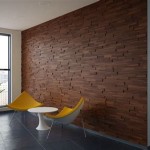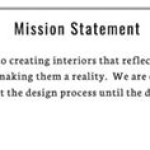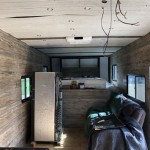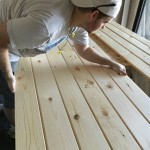How Much Does An Interior Decorator Cost Per Room?
Determining the cost of hiring an interior decorator for a room is a complex process, influenced by a multitude of factors. Unlike purchasing a tangible product with a fixed price, interior design services are customized and tailored to individual needs, preferences, and the scope of the project. Therefore, providing a definitive, universal answer to the question of "how much does an interior decorator cost per room" is challenging. Instead, understanding the variables that contribute to pricing is crucial for budgeting and informed decision-making.
The cost is not simply a per-room fee; it is an aggregation of time, expertise, resources, and the specific elements involved in transforming a space. Interior decorators and designers bring a comprehensive skillset to the table, encompassing space planning, material selection, furniture sourcing, project management, and aesthetic coordination. They act as creative problem-solvers, transforming abstract ideas into tangible realities while ensuring functionality, comfort, and visual appeal. The value they add extends far beyond simply choosing paint colors and arranging furniture.
Before delving into the specifics of pricing models, it is essential to differentiate between an interior decorator and an interior designer. While the terms are often used interchangeably, there are key distinctions. An interior decorator focuses primarily on the aesthetic aspects of a space, such as selecting furniture, fabrics, and accessories. An interior designer, on the other hand, possesses a broader range of skills and knowledge, including architectural awareness, space planning expertise, and knowledge of building codes. They can often handle more complex projects involving structural modifications and renovations. This distinction impacts cost, as interior designers typically command higher fees due to their enhanced skillset and qualifications.
Understanding the various pricing models employed by interior decorators is the first step in determining potential costs. These models offer different approaches to compensation, each with its own advantages and disadvantages. The most common pricing structures include hourly rates, flat fees, cost-plus pricing, and percentage-based fees.
Hourly Rates: Tracking Time Spent On Your Project
One of the most transparent and straightforward pricing models is the hourly rate. In this scenario, the interior decorator charges a fixed rate for each hour spent working on the project. This rate typically encompasses all aspects of their services, including consultations, design development, sourcing, project management, and site visits. Hourly rates vary based on experience, location, and the complexity of the project. Entry-level decorators in smaller markets may charge rates starting around $50 per hour, while experienced designers in major metropolitan areas can command rates exceeding $200 per hour. The total cost for a room renovation using this model will depend entirely on the number of hours invested in the project.
This pricing model is generally suitable for smaller projects or those with a clearly defined scope. It provides flexibility and allows the client to track expenses closely. However, it can be difficult to estimate the total cost upfront, as unforeseen challenges or changes in scope can extend the project timeline and increase the overall bill. Open communication and detailed time tracking are essential for maintaining transparency and preventing cost overruns.
Furthermore, the hourly rate model incentivizes efficiency. Decorators are motivated to complete tasks promptly to minimize billable hours. This can benefit the client by reducing overall costs. However, it also places the onus on the client to make timely decisions and provide clear direction to avoid unnecessary delays.
For example, a simple bedroom refresh involving new paint, bedding, and accessories might require 10-20 hours of design work. A more complex project, such as a complete kitchen remodel with structural changes, could easily require 100 hours or more. It's crucial to discuss the estimated number of hours with the decorator upfront and establish a clear understanding of the project scope.
Flat Fees: A Predictable Project Cost
A flat fee, also known as a fixed fee, offers a more predictable pricing structure. In this model, the interior decorator provides a single, all-inclusive price for the entire project. This fee covers all design services, project management, and other related costs, excluding the actual cost of furniture, materials, and labor. The client knows the total cost upfront, which simplifies budgeting and eliminates the uncertainty associated with hourly rates. However, the flat fee is typically calculated based on a well-defined scope of work, and any changes or additions to the project may result in additional fees.
This pricing model is well-suited for projects with a clearly defined scope and a limited number of variables. It provides transparency and eliminates the risk of unexpected cost increases. However, it is crucial to ensure that the flat fee accurately reflects the complexity and scope of the project. Decorators may inflate the fee to account for potential unforeseen challenges, which could make it more expensive than other pricing models. Conversely, a decorator might underestimate the complexity of the project and deliver subpar results to maintain profitability.
Negotiating the terms of the flat fee is essential. The client should carefully review the scope of work outlined in the contract and ensure that it encompasses all their needs and expectations. It's also important to clarify what is included in the fee and what is considered an extra expense. For instance, the flat fee might cover the initial design concept, sourcing of materials, and project management, but it might exclude site visits or revisions to the design. Changes to the design or the scope of the project after the contract is signed will likely incur additional charges.
For example, a decorator might charge a flat fee of $5,000 for designing a living room, which includes creating a mood board, space planning, sourcing furniture, and coordinating the installation. However, the cost of the furniture itself, the painting service, and accessories are not included in this flat fee.
Cost-Plus Pricing: Transparency in Material Costs
The cost-plus pricing model involves charging the client the actual cost of goods (furniture, materials, and accessories) plus a markup percentage. The markup typically ranges from 10% to 40%, depending on the decorator's experience and the complexity of the project. This pricing model provides transparency regarding the cost of goods, as the client sees the actual invoices and pricing. However, it requires careful tracking and documentation by the decorator to maintain transparency and build trust with the client.
This pricing model is often favored by clients who want to control the budget and have a clear understanding of where their money is being spent. It eliminates the potential for hidden fees or inflated pricing on goods. However, it's essential to ensure that the decorator is obtaining competitive pricing on materials, as the markup percentage can still result in a significant overall cost. The decorator should be able to demonstrate their ability to source high-quality goods at reasonable prices.
The client should also negotiate the markup percentage upfront to ensure that it is fair and reasonable. It's important to consider the decorator's experience and the value they bring to the project when negotiating the markup. A highly experienced decorator with extensive industry contacts may justify a higher markup than a less experienced decorator. Furthermore, a client should clarify who handles and pays for shipping and taxes on cost-plus. Usually, the client pays for shipping and taxes.
For instance, if a decorator sources a sofa for $2,000 and charges a 20% markup, the client would pay $2,400 for the sofa. The decorator pockets $400 for the work of finding and sourcing the sofa, but does not hide any fees on the price of the sofa itself.
Beyond pricing models, the overall cost of an interior design project is influenced by several key factors. These include the size and complexity of the room, the scope of work, the client's design preferences, the geographic location, and the decorator's experience and reputation. A larger room will naturally require more furniture, materials, and labor, which will increase the overall cost. A complex project involving structural modifications or custom-built elements will also be more expensive than a simple room refresh.
The client's design preferences play a significant role in determining the cost. High-end materials, custom-made furniture, and intricate detailing will increase the budget. The geographic location also impacts pricing, as labor costs and material sourcing can vary significantly from one region to another. Decorators in major metropolitan areas typically charge higher fees than those in smaller markets. An experienced decorator with a strong reputation and a proven track record will command higher fees than a less experienced novice.
Before hiring an interior decorator, it is crucial to conduct thorough research and obtain multiple quotes from different professionals. Compare their pricing models, experience, portfolios, and client testimonials. Ask detailed questions about their design process, project management approach, and payment terms. Review the contract carefully before signing to ensure a clear understanding of the scope of work, pricing, and responsibilities. Clear and open communication is paramount to a successful and cost-effective interior design project.

2024 Interior Designer Costs Charges Hourly Rates Fees To Hire

2024 Interior Designer Costs Charges Hourly Rates Fees To Hire

How Much Does An Interior Designer Cost In 2024 Decorilla Design

Interior Designer Cost Fees Fixr

Inside The Design Process How Much It Really Costs To Work With A Designer Emily Henderson

2024 Interior Designer Costs Charges Hourly Rates Fees To Hire

Interior Designer Cost Fees Fixr

How Much Does An Interior Designer Cost In 2024 Decorilla Design

How Much Does An Interior Designer Cost In 2024 Angi

Interior Design Fees How Much Does An Designer Cost Foyr
Related Posts








